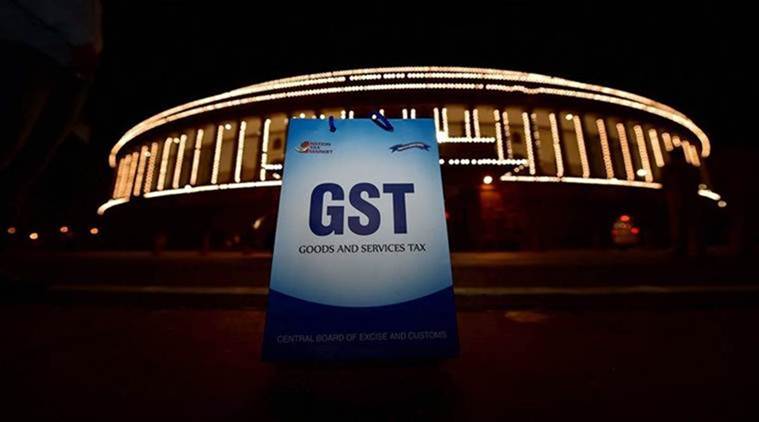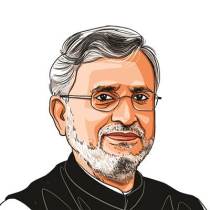Bound together by GST
One year on, GST regime has advanced cooperative federalism, helped unify India economically

Another challenging task was to create the appropriate IT infrastructure and network for integrating and bringing all the states on to a common platform and creating probably the biggest tax administration system in the world.
Before the onset of the GST, the indirect tax scene in India was fairly chaotic; it was “one nation, many taxes”. The pre-GST indirect tax scenario mimicked the political scenario just after Independence before the consolidation of the Indian Union by Sardar Patel. This diversity in tax practices across the country was perhaps the biggest stumbling block in the economic unification of India.
A common and uniform indirect tax code across the country with 37 different tax jurisdictions, 16 different tax levies and 15 kinds of cesses/surcharges under eight different constitutional entries called for a grand unification across legal frameworks, IT systems and tax administration systems.
The first big milestone was the amendment of the Constitution. The next big task was the preparation of a draft law and designing of the rules of business. Another challenging task was to create the appropriate IT infrastructure and network for integrating and bringing all the states on to a common platform and creating probably the biggest tax administration system in the world.
Inevitably, teething troubles began to emerge just one month into the introduction of the GST. The unifying features of the GST system and the unique features of the Indian GST led to some initial hiccups and difficulties in the implementation of, and compliance with, the new system in India. The GST Council rose to the occasion, met frequently and for long hours, to resolve the issues.
As a result of the endeavours of the Council, the GST is well and truly on the path of stabilisation. What is remarkable is that all decisions, ranging from those relating to relatively small issues like enlarging the scope of composition to complex decisions involving the shared jurisdiction of Central and state tax authorities, were taken with consensus; voting has never been resorted to in the Council. This is as much a reflection on the level of maturity of the states as the acumen of the Union finance minister.
Even in the midst of this momentous transition, the revenue scene is encouraging. A total of Rs 7.41 lakh crore (monthly average of Rs 92,581 crore) was collected during the first eight months (till March 2018) under the GST. On this basis, the annualised collection works out to Rs 11.11 lakh crore which represent a CAGR slightly in excess of 14 per cent over the total collection from subsumed taxes in 2015-16. While the states have been guaranteed a 14 per cent year-on-year growth, the Centre, unfortunately, has no such comfort.
It should be borne in mind that this healthy growth has been achieved despite the absence of a mechanism to validate credit claims and there being no e-way bills to monitor the movement of goods; even though the e-way bill system introduced in April 2018 is in an experimental stage, the revenue for the last month has exceeded Rs 94,000 crore. We can expect substantial revenue gains once a mechanism to auto-verify credit claims is introduced and the fledgling e-way bill system stabilises.
Meanwhile, the agenda for further rationalisation and simplification marches on. At the structural level are issues like inclusion of petroleum in the GST and extending the GST net to real estate. I see neither of these happening in a hurry.
Petroleum revenue is the only stable source of revenue for the states and the Centre in this transition period and it would be difficult to get the states on board in this initial period. Besides, merely getting them into the GST would probably not ease the burden on their prices, for the states and the Centre too would surely add a top-up levy for revenue purposes and for discouraging consumption of these demerit goods, in line with international best practices.
Real estate, too, is a relatively secure and stable source of revenue left with the states in the immediate post-GST era and the states would be wary of the possible fallout of extending GST to the sector, even though I feel that tracking of the value chain in real estate would not only clean up the sector but would also introduce much needed transparency in real estate deals.
At the procedural level, the need of the hour is to devise a simplified return and an equally simplified return filing process. The process should be such as to elicit the minimum required information in a routine manner while inflicting minimum or no pain; the well-known adage of the bee collecting honey while inflicting minimum pain to the flowers is no less relevant here.
Another major challenge would be to devise a mechanism for early settlement of the IGST being collected. The settlements are delayed primarily because of the deferment of the GSTR-2 statements and we have to find a way to elicit the information required for expediting settlement in the absence of the said statement.
In this context, it must be borne in mind that consuming states like Bihar were expected to be the biggest beneficiaries of the destination-based GST; instead, they are grappling with shortfalls and one of the biggest reasons for this is the accumulation of a huge balance on the IGST account. Early, regular and timely settlement of the IGST will not only help provide to the states what is due to them in a timely manner, it will also ease the fiscal burden on the Centre.
The GST has helped us transition from “one nation, many taxes” to “one nation, one tax”. It has been a wonderful lesson in co-operative federalism, one which is in the process of transforming India into a common market by bringing about economic integration in an already integrated polity.
The writer is deputy chief minister of Bihar
For all the latest Opinion News, download Indian Express App






































No hay comentarios:
Publicar un comentario